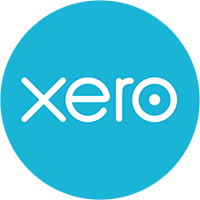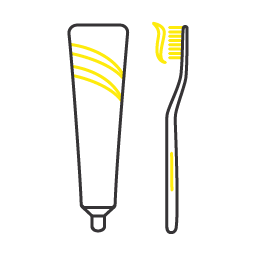There is no better number to understand in your business than your breakeven point.
I have seen businesses entirely focused on trying to achieve growth by having a razor fixation on their sales numbers alone.
While it’s important to not lose sight of sales, it’s not such a critical number that you should focus on it at the expense of everything else.
the breakeven point
It might surprise you that one of the most effective ways to drive profit is to focus on your breakeven point.
Typically, the breakeven point is used by manufacturers to work out how much revenue or units is required to sell to cover their variable and fixed costs. In my research in working out the best method, I was amazed to find that very little was dedicated to the service industry – my industry!
It opened Pandora’s box for me.
services are the future
Did someone miss the memo? Have they not seen that Australia is saying ‘goodbye’ to making things?
The world economy is different now. Any love for making things on a significant scale has moved over to China. The jobs of the future are in helping and doing, not in the making… as harsh as that might sound.
Services are at the heart of our nation. It’s where we find the people who help including:
- Doctors
- Lawyers
- Teachers
- Cleaners
- Truck Drivers
- Designers
- Architects
- Accountants
- Engineers
- IT
- Drivers
While there will always be some form of small manufacturing in Australia, it’s safe to say we can easily base our whole economy on services. Thanks to the internet and online solutions, these services are exportable across the world and have taken off in the last few years. Take for example financial and business services, which can now be one of our biggest exporters.
So, coming back to my initial point…
how does a service industry business work out their breakeven?
The complication in calculating a service business breakeven is that the business doesn’t have a physical product to sell like a retailer or manufacturer.
The first step is to identify your unit. For example, a consultancy-based firm bills their customers by the hour and an accounting firm charges by a tax return or suite of services, a training company sells courses, and other businesses might have a fixed price per customer, also known as value-based pricing.
In each case, they are all seeking to find out how many units [hours, tax returns, courses, customers and so on] they need to reach breakeven.
Distinguishing your variable and fixed costs is where the complications are. The nature of a service-based business means that the most considerable portion of its expenses commonly relates to wages and salaries leading to difficulties in defining what is variable and what is a fixed cost.
We have two different examples to highlight how this works.
example 1
business type: Consultancy
unit of measure: Clients
objective: Find out how many clients they need to breakeven
total fixed costs: $260,000 [Wages $182,000; Other $78,000]
selling price: Average client will need 100 hours per year @ $125 per hour = $12,500 p.a.
variable cost: Variable cost is $2,100 p.a. [includes printing, on-call consultants, room hire]
the breakeven formula
Total Fixed Cost / (Selling Price – Variable Cost)
$260,000 / ($12,500 – $2,100) = 25 clients
The business needs 25 clients each year to breakeven.
The businesses income statement would look like this:
| unit | total | |
| no of clients | 25 | |
| income | $12,500 | $312,500 |
| variable costs | $2,100 | $52,500 |
| gross profit | $260,000 | |
| fixed costs | $260,000 | |
| net income | $0 |
quick capacity check
While we know we need 25 clients to breakeven, the question remains does the business have the capacity to handle 25 clients?
a quick calculation to work this out is:
25 clients x 100 hours each per year = 2,500 labour hour.
Based on a 38-hour week operating 48 weeks of the year, the two consultants can provide
(38 hours x 48 weeks x 2) = 3,648 hours
At breakeven the business operates at 69% capacity (2,500/3,648)
This means that the business is more than adequate to take on more clients.
example 2
business type: Accounting
unit of measure: Chargeable Hours
objective: Find out how many hours they need to breakeven
total fixed costs: $85,000
selling price: $125 per hour
variable cost: $57 per hour
the breakeven formula
Total Fixed Cost / (Selling Price – Variable Cost)
$85,000 / ($125 – $57) = 1,250
The business needs 1,250 chargeable hours each year to breakeven.
The businesses income statement would look like this:
| unit | total | |
| no of clients | 1250 | |
| income | $125 | $156,250 |
| variable costs | $57 | $71,250 |
| gross profit | $85,000 | |
| fixed costs | $85,000 | |
| net income | $0 |
quick capacity check
Assuming the business can call on only one person to provide the service.
a quick calculation to work this out is:
Based on a 38-hour week operating 48 weeks of the year, the one consultant can provide
(38 hours x 48 weeks) = 1,824 hours
At breakeven the business operates at 69% capacity (1,250/1,824)
This means that the business is more than adequate to take on more clients.
If you are in a service-based business, take the challenge and calculate your breakeven point. This number forms the basis for key pricing decisions, volume and capacity planning in running your business.
we’re here to help!
The expert advisors at businessDEPOT have years of experience working with businesses and helping them understand the importance of breakeven and strong margins. Talk to us today and find out how we can help your business gain that competitive advantage.
Give our team a buzz on 1300BDEPOT or get in touch at oneplace@businessdepot.com.au!




















































